We're an affiliate
We hope you love the products we recommend! Just so you know, we may collect a share of sales or other compensation from the links on this page at no additional cost to you. Thank you if you use our links, we really appreciate it!
Beagles are popular small to medium-sized dogs across homes in the US and Europe. They are loved by many because of their happy nature, outgoing temperament, and boundless energy.
Modern-day Beagles are always vigilant, work-oriented, and strong-minded, with enough resilience to keep up with an active lifestyle.
Beneath those droopy ears and big expressive eyes is a robust dog who is always ready to hunt by ground-scenting prey, thanks to their sophisticated sense of smell.
In this guide, we highlight everything you need to know about Beagles including their history, physical characteristics, care, and many more.
A Brief History of Beagles
Many experts agree that the Beagles were initially bred in England around the 1500s. These hound canines were originally bred to hunt small game such as rabbits and hares.
Some people also used Beagles as gun dogs, to flush out both small and large animals during hunting expeditions.
The name ‘Beagle’ is believed to come from the French Word “begeule,” which translates to ‘loudmouth’ or ‘open throat’.
These little canines were given this connotation because of their baying and loud howling when alerting their human handlers to the presence of prey.
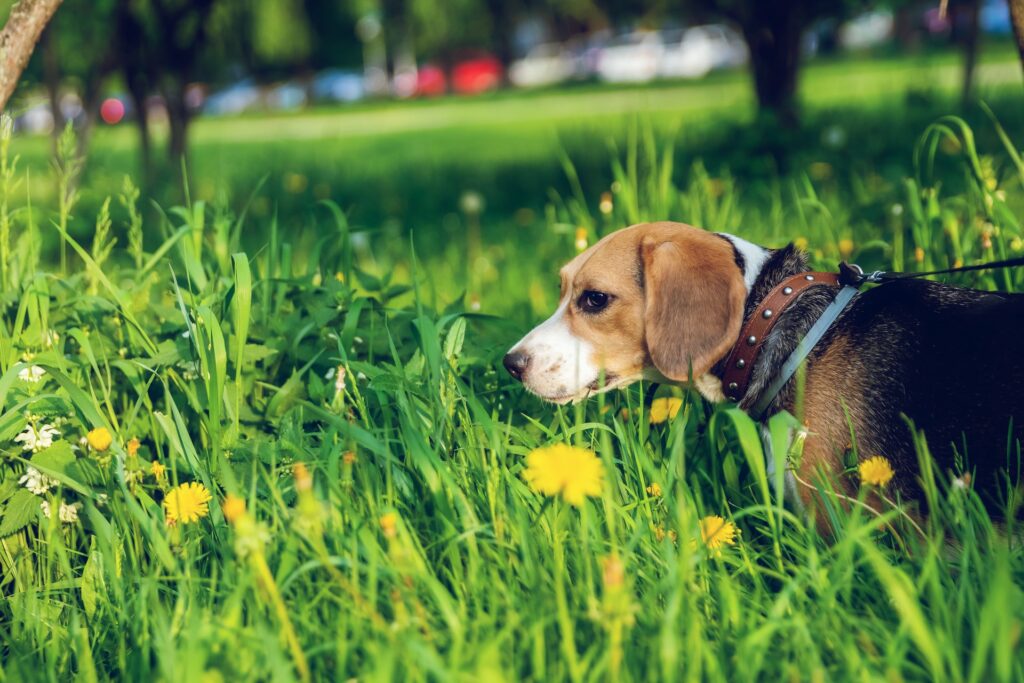
The Talbot Hounds (a now extinct hunting dog) are thought to be one of the forefathers of the present-day Beagles. The Talbot Hound was an exceptional hunter although they had a bad reputation for being slow in pace.
In a bid to create a more compact and faster hunter, the Talbot Hounds were crossed with small-sized dogs including the Southern Hounds and the Greyhounds.
This cross-breeding produced a favorable, agile, small-sized dog with the strong hunting instincts of the Talbot and the pace of the faster Hounds.
During the middle ages, the wealthy men of England had a habit of keeping a pack of Hounds, but Beagles became a popular choice for most hunters who could not afford larger packs.
The compact size of Beagles meant they could be kept as household companions in addition to helping hunters catch rabbits and other small animals.
Beagles were more refined over the years both in England and America and their popularity peaked by the start of the 19th century.
The American Kennel Club recognized Beagles as purebred dogs in 1885. More people began to breed Beagles for their appearance and temperament rather than their strong hunting instincts.
Today, Beagles are still among the most popular dog breeds in the US, often occupying one of the top 10 positions in yearly rankings done by the AKC.
5 Interesting Facts About Beagles
1. Beagles have a very keen sense of smell
Beagles have nearly 220 million scent receptors in their noses, which is way better than the 5 million receptors found in humans.
These former rabbit hunters have a very sensitive nose that can distinguish between 50 different scents when properly trained.
Due to their elaborate scent perception, Beagles are widely used by law enforcement officers to track prohibited items such as drugs and explosives.
2. Purebred Beagles exist in different sizes
The American Kennel Club recognizes two varieties for Beagle based on size – that is the 13-inch and the 15-inch variants.
While the maximum height limit for Beagles is 15 inches in the US, the UK recognizes Beagles with a capped height of 16 inches, which is a nod to the broad size variety of this Hound.
3. Beagles are vocal dogs
Beagles communicate through various voices, and like humans, they always want to be heard when they air their grievances.
Beagles can make three distinctive vocalizations, which are barking, baying (yodel-like sound), and howling.
4. Beagles are commonly used in scientific research
Beagles are highly favored for their sociable character, docile nature, and love for humans. These friendly outlooks have made them a good candidate for use as lab animals in scientific research.
More than a few Beagles have been used to study the effects of diseases in the body as well as during trial runs when testing new drugs and medical procedures.
Even though they don’t have a choice to make in this situation, Beagles trust that their human handlers cannot hurt them no matter how uncomfortable it is.
5. The white tip on Beagle tails had a special purpose
You may think that the white tail tip on most Beagles is just a factor of coincidence, but the unique marking was bred to make Beagles visible when making a hunt in dim landscapes.
The brightly colored tip made these little Hounds easily reachable by their masters, especially when covering cluttered hunting grounds.
Beagle Puppies
Beagle puppies are full of life, charismatic, and equally beautiful to behold, making them hard for any dog enthusiast to resist.
You can add a Beagle puppy into your home through adoption from rescue organizations or purchasing from trustworthy breeders.
Your exact choice will narrow down to what you are looking for in a household pet, so you should do your homework before making the bold step.
Beagle puppies are energetic and always willing to play. This means you should puppy-proof your home beforehand and invest in dog accessories to make them feel comfortable.
Slot some time daily for interacting and playing with your Beagle puppy, but make sure they’re fully vaccinated before taking them outdoors.
Early socialization can help adjust your Beagle puppy and make them more receptive to all family members and visitors.
Types of Beagles
1. Standard Beagle
The regular Beagle is the closest representation of the historic Hound initially bred by Englishmen to chase rabbits and other small game.
Standard Beagles have a shoulder height range of between 13 – 15 inches, and they are known for their highly sophisticated sense of smell which makes them excellent service dogs.
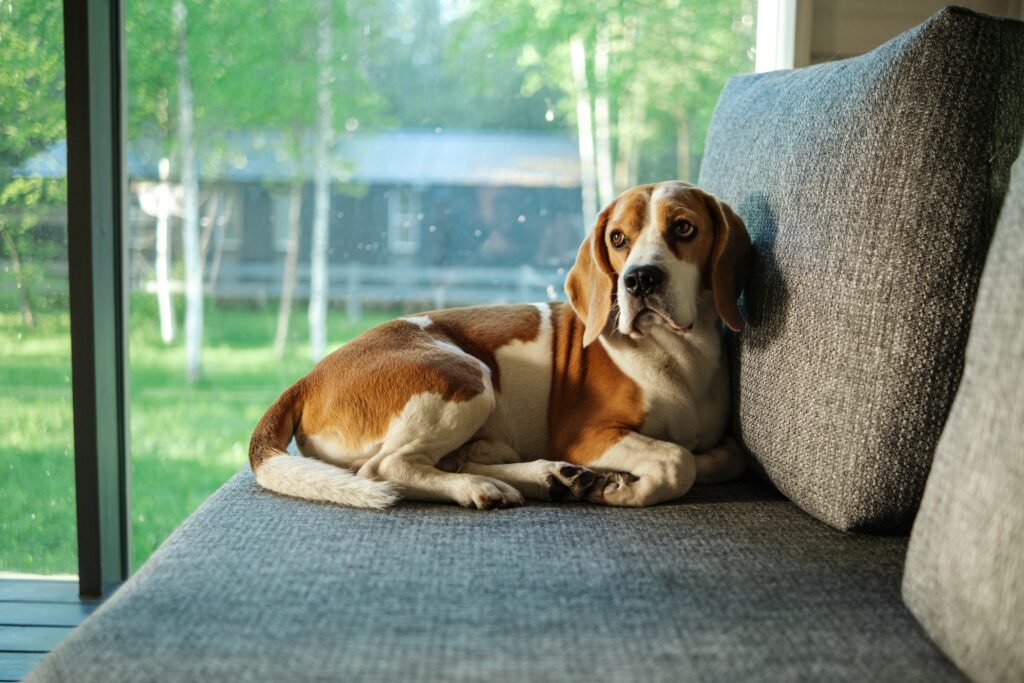
Most standard Beagles have a white-tipped tail which increases their visibility to the hunters when flashing out hiding prey in areas of poor visibility.
These medium-sized Hounds require consistent physical activity and mental stimulation because they are prone to obesity
Standard Beagles are loyal to their human family and they can be a superb choice for individuals living an active lifestyle.
2. Pocket Beagles
Pocket-sized Beagles are the scaled-down versions of the standard ones. AKC does not recognize them as a separate breed because they only differ from the regular Beagle in shoulder height.
These little hounds stand at heights below 13 inches, but they have all the charm and irresistible personality of the bigger Beagles.
Pocket Beagles earned their names during the reign of Queen Elizabeth I, since it was reported that she had a very small Beagle who could fit in her pockets.
3. Beagle Mixes
Standard Beagles can be crossed with other purebred dogs to produce hybrid pups with combined characteristics from both parents.
An example of the Beagle mix is the American Eagle, which is a cross between a purebred Beagle and an American Eskimo.
Many breeders have also crossed a purebred Pekingese and a standard-sized Beagle to produce a hybrid pup known as ‘The Peagle’.
Beagle Physical Characteristics
Size and weight range
Beagles are categorized as small to medium-sized dogs in the Hound classification. They are very similar to foxhounds although they have a much smaller stature.

Adult male Beagles can have a shoulder height of between 13 – 15 inches while their female counterparts can be slightly shorter than this.
Most healthy Beagles have a weight range of between 20 – 30 pounds depending on the height variation. The males are slightly heavier than the females.
Coat color and texture
One of the outstanding highlights of the Beagle dog breed is their coat which usually comes in a combination of different patterns. Most Beagles have a tri-color coat of black, white, and tan.
We also have less common Beagles with two colors, usually a mix of red and white. These rare pups have a white coat with scattered white markings on specific areas including the face and back.
Another dual-colored variety of the Beagle has a white coat dotted with lemon markings on the back, ears, and face.
Beagles with a blue or gray coat with tan markings are equally rare and considered a unique version due to their speckled look. They are usually highly-priced by both breeders and Hound enthusiasts.
Beagles have a double coat consisting of a soft, dense undercoat with a coarse-haired weather-resistant topcoat to keep them insulated during harsh climates.
Distinctive features
One of the most exceptional physical features of Beagles is their long, floppy ears. These droopy ears were selectively bred to enhance tracking by funneling scent directly into the dog’s nose.
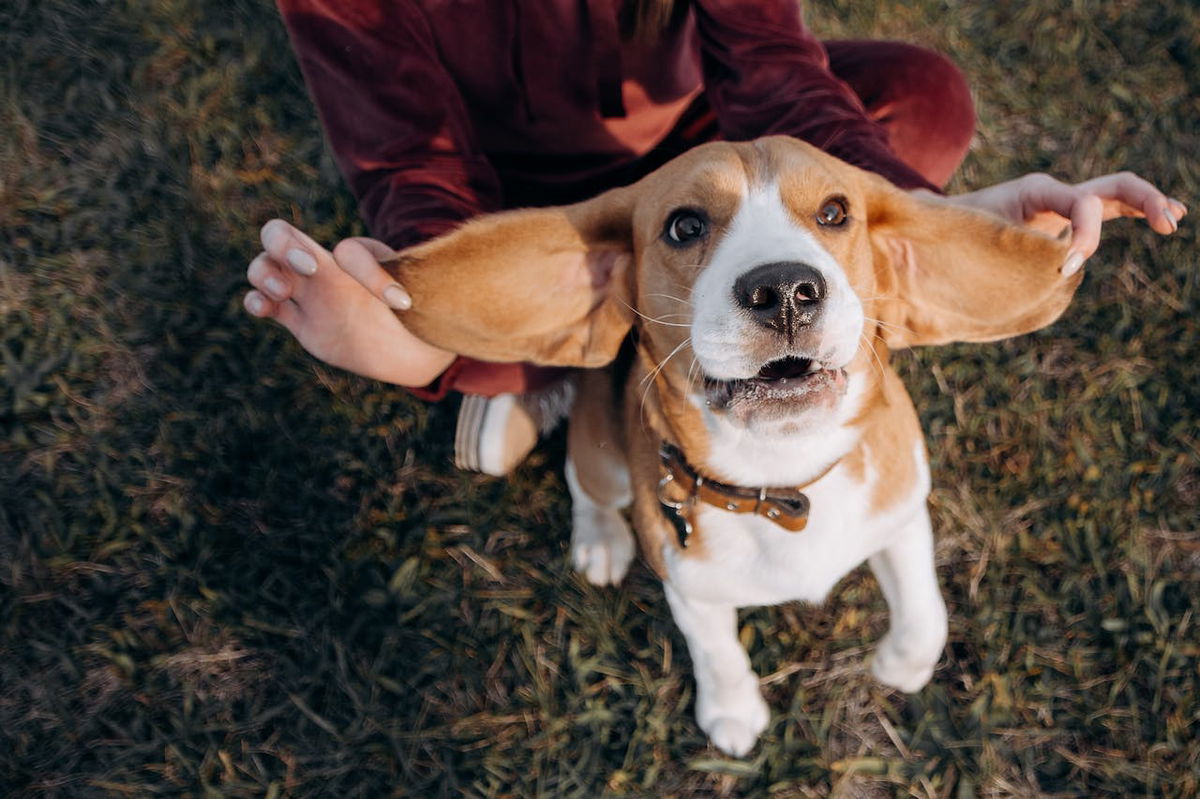
The expressive almond-shaped eyes of Beagles are also a top highlight of this breed. In addition to offering an endearing expression, these sharp eyes are helpful in hunts.
Beagle Temperament and Personality
Well-trained Beagles have a stable temperament and a friendly personality. These dogs are highly sociable and they can thrive in both large and small families.
Beagles are great with children because of their innate need to play, humorous nature, and active lifestyle with a touch of curiosity.
Novice dog owners can have a great time with Beagles, provided they plan on how to keep them entertained and satisfied.
Beagles can get along with other pets, making them a good addition for people who own multiple household pets.
Proper introduction and socialization among all pets are important to ensure your furry family lives in harmony without strife and competition.

One major downside of Beagles is their ‘stubborn’ streak which can lead to moments of frustration. This stems from their independent thinking nature, which leads them to do things on their own terms.
Most Beagle owners usually resort to using food rewards as a mechanism to calm down mischievous behavior, but this can only encourage their little hound dogs to do more.
Beagle Intelligence
Going by Dr. Stanley Coren’s research and ranking of dogs for canine IQ, you might be mistaken to think that Beagles are dumb.
These little Hounds appeared among the bottom 10 breeds tested for obedience and working intelligence.
However, this meant that Beagles have different motivators from what Dr. Coren used as a standardized test for dog intelligence.
Beagles have an above average brainpower which makes them able to solve daily problems and excel in the service industry.
Their smartness has made them great students for various commands and tricks including complex works involved in scent tracking.
Beagle Health and Lifespan
Average Lifespan
The average lifespan of most Beagles is within the range of 12 – 14 years, however, some individual dogs can come short or exceed this range.
Some of the factors that can influence the life expectancy of your pup include diet, exercise, and underlying medical conditions.
Common health issues and genetic disorders
Beagles are generally healthy dogs, but some of them are predisposed to suffer certain health problems due to poor breeding.
It’s important to be aware of these conditions if you have this breed or you’re considering adding one to your household.
The following are some of the common health problems for Beagles:
- Obesity
- Hip dysplasia
- Cherry eye
- Intervertebral Disk Disease
- Progressive Retinal Atrophy (PRA)
- Epilepsy
- Patella Luxation
- Hypothyroidism
If you choose to purchase a Beagle, we strongly recommend that you go for a reputable breeder who prioritizes the health of the puppies per the required regulations.
A good breeder should have no problem with answering all your questions by providing all the health clearance certificates for both parents.
Preventative measures for good health
It’s always advisable to take your dog for routine exams at the vet’s office as a preventive measure for common illnesses.
Your vet will be able to detect chronic conditions in time and start a treatment plan that can boost the recovery chances of your Beagle.
Make sure your Beagle is updated with their core vaccines to prevent them from getting infected with communicable diseases.
Giving your dog a portioned high-quality dog food diet is an essential step in ensuring they get nourished for better health.
In addition to food, taking your dog for a regular workout can help them maintain a healthy weight and reduce the chances of chronic conditions.
Beagles and Allergies
Beagles are considered moderate to high-rate shedders due to their tightly packed dual-layered coat. More than usual fur fall is experienced during the seasonal changes.
These dogs should not be a huge concern to allergy-prone individuals since essential grooming can keep the allergens away.
Maintaining good hygiene practices, such as cleaning the home and using humidifiers, can also help reduce the amount of pet dander in your atmosphere.
Beagle Grooming Needs
Routine grooming such as weekly brushing is essential to keep Beagles looking great and maintain their coat in top condition.
Brushing your dog’s coat also helps in distributing natural oils across the body, and this helps their coat remain soft and shiny.
Beagles’ dense coats do not pick up much dirt and debris, so you won’t need to bathe your dog too frequently.
Monthly washes are enough to rejuvenate your little Hound’s coat, but make sure to use canine shampoo for the best results.
Plan to keep your Beagle’s floppy ears clean since they can harbor pathogens and encourage wax buildup if left unchecked.
You can use a soft cotton wool ball and a vet-approved ear cleansing solution to gently wipe down your dog’s ear twice a week.
Trimming your Beagle’s nails is also important in preventing nail overgrowths – which can affect their normal gait.
We also recommend that you brush your dog’s teeth a couple of times a week using canine-specific toothpaste to maintain good oral hygiene.
Beagle Exercise and Activity Levels
Daily activity needs
Your Beagle will appreciate interactive moderate exercises and stimulation that last at least one hour and thirty minutes every day.
We’d recommend splitting the exercise period to multiple sessions a day, instead of working out your dog for extended periods without rest.
Keep in mind that Beagles are high-energy dogs, even though they might not look like it. Failure to offer them something to do creates room for them to engage in mischievous conducts.
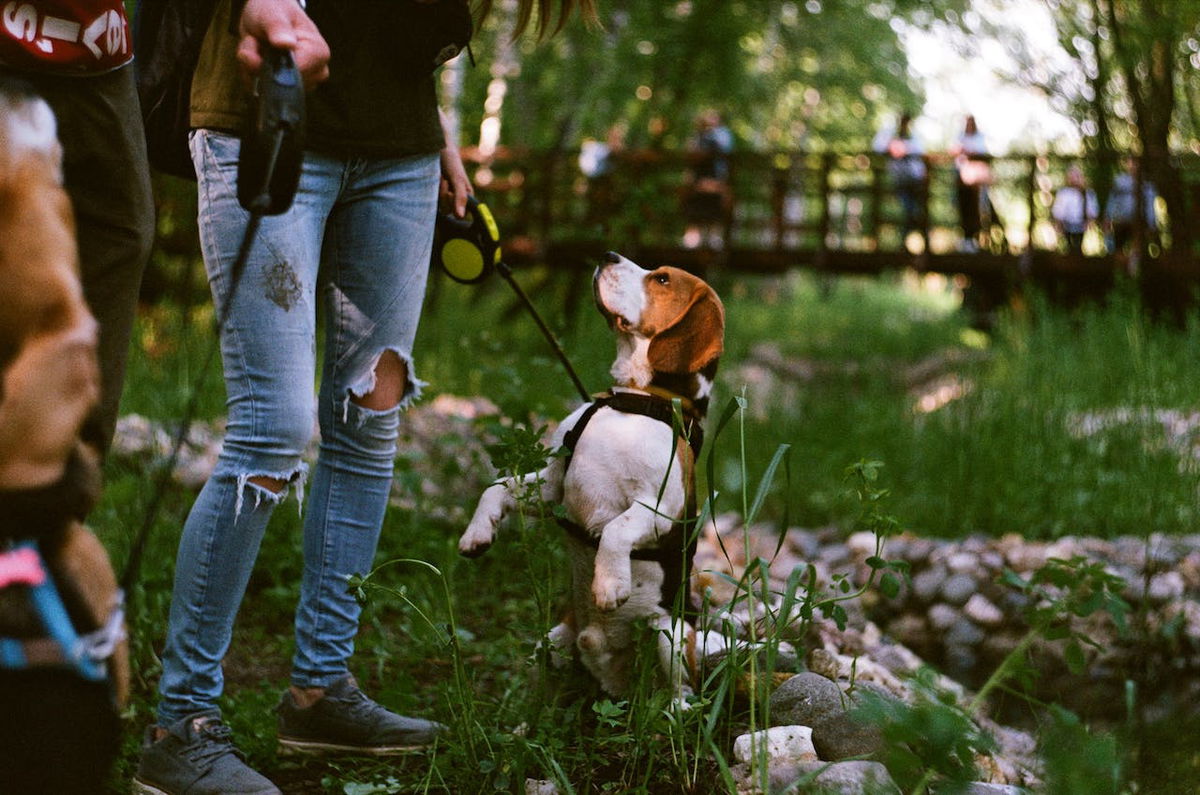
Suitable activities and games for Beagles
Being active dogs, Beagles require a combination of games and exercises that direct their energy in positive channels.
The following are some of the suitable activities you can engage with your Beagle:
- Scent games
- Puzzle games
- Walking
- Jogging
- Running
- Hiking
- Playing fetch
- Agility training
Importance of mental stimulation
Mentally stimulating games can help reduce boredom and decrease the chances of emotional distress and anxiety on your little Hound.
Providing your dog with enough mental stimulation is crucial in developing their judgment abilities and problem-solving knacks.
Brain-taxing games can also slow down mental decline in elderly Beagles, reducing their chances of suffering canine dementia.
Consistent mental exercise helps improve the bond between you and your lovely beagle by strengthening the emotional attachment.
Beagle Training and Socialization
Training Beagles for obedience and working roles will require your patience and consistency since they tend to be strong-willed.
You need to have them leashed during training sessions, otherwise, your Beagle may end up sniffing everything as they walk during the entire session.
A lack of proper obedience training can cause Beagles to be stubborn because of their independent nature and penchant to perform things on their own.
It also helps to socialize your Beagle right from their puppyhood stage by exposing them to different people, animals, and settings.
Beagle Living Conditions
Since Beagles are Hounds, potential owners should know about their inherent desire to roam, wander, and explore the surroundings.
These hunting dogs can thrive in a large house with a fenced backyard that offers them opportunities to play freely while protected.
Apartment dwellers can also own Beagles but they need to be cautious about the dog’s tendencies to sniff their way out into nearby blocks or houses.
Beagle Diet and Nutrition
Beagles are notorious for sniffing, detecting, and eating any edible food item they can find. This causes them to overeat and increases their likelihood of adding extra pounds.
For proper portion control, plan to offer your adult Beagle two meals a day with a serving size of ¾ cup of high-quality canine diet with limited carbohydrates.
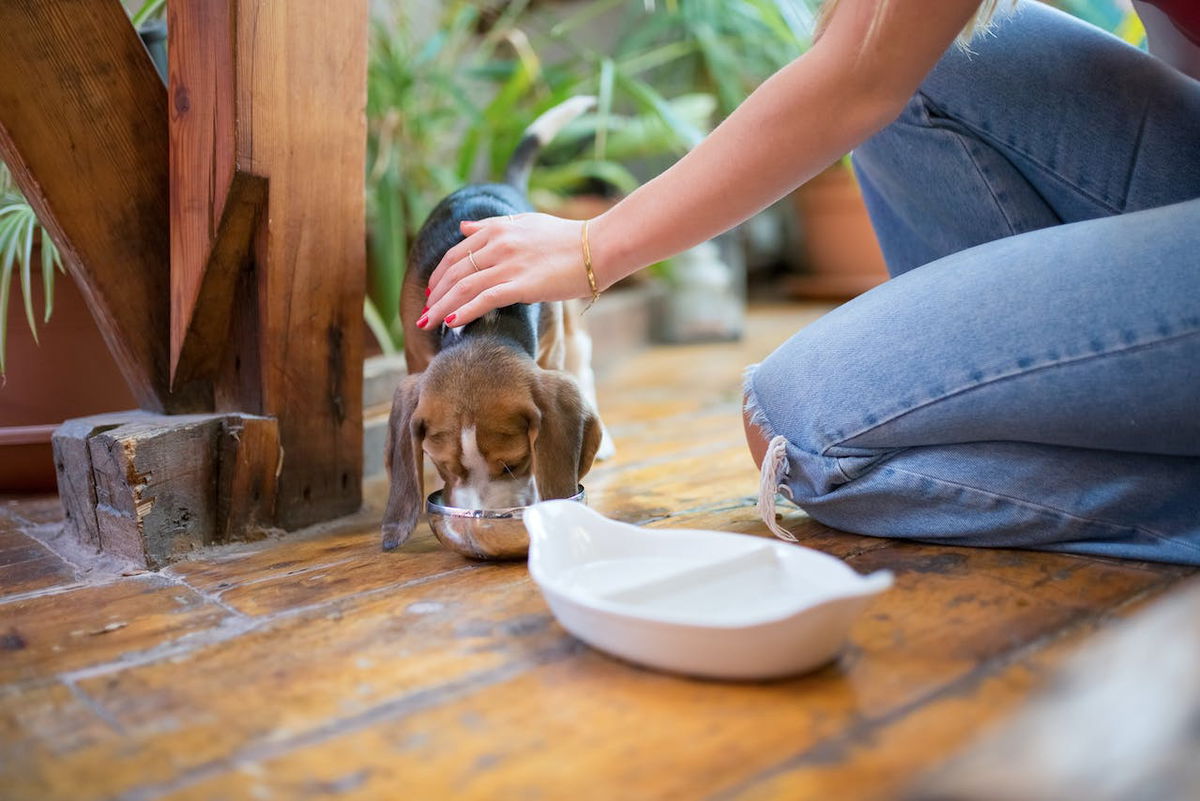
The exact amount of food your dog eats should vary depending on several factors including age, activity level, and underlying medical conditions.
It helps to discuss the nutritional needs of your dog with a qualified vet nutritionist for tailored recommendations of the best food types, portions, and feeding schedules.
Beagle Pregnancy and Litter Size
The average gestation period for most Beagles is about 63 days, and you can expect a litter size of between 1 – 10 puppies.
The number of puppies can vary greatly depending on the mother’s age, health conditions, and other genetical factors.
You can guarantee your do a stress-free pregnancy journey and whelping process by providing them with sufficient prenatal care and feeding them the right food.
Conclusion
Good-natured Beagles are highly sociable and they always seem to have a huge smile on their expressive faces. These little Hounds have a big personality packed in their small bodies.
Charming, canny, and full of life, the Beagle is an ideal household pet for many families, especially since they have a soft spot for children and visitors.
Beagles may be little dogs in stature, but they have a big heart, just like their floppy ears!
They however need a firm and pack-leading owner, due to their independent-thinking nature which inspires them to work on their own terms.
Get prepared to creatively combat your Beagle’s penchant for mischievousness by providing proper training and interactive play sessions.
Laura is the founder of Furs'n'Paws. She is a also a pet writer and expert with more than 20 years of experience of working with dogs and cats. She developed a very strong love for animals at a young age. Her passion led her to establish a thriving pet sitting and dog walking business in Dubai. As an expert in pet training, behavior, and nutrition, Laura is committed to helping pet owners and pet lovers by offering high-quality information on a wide range of topics.


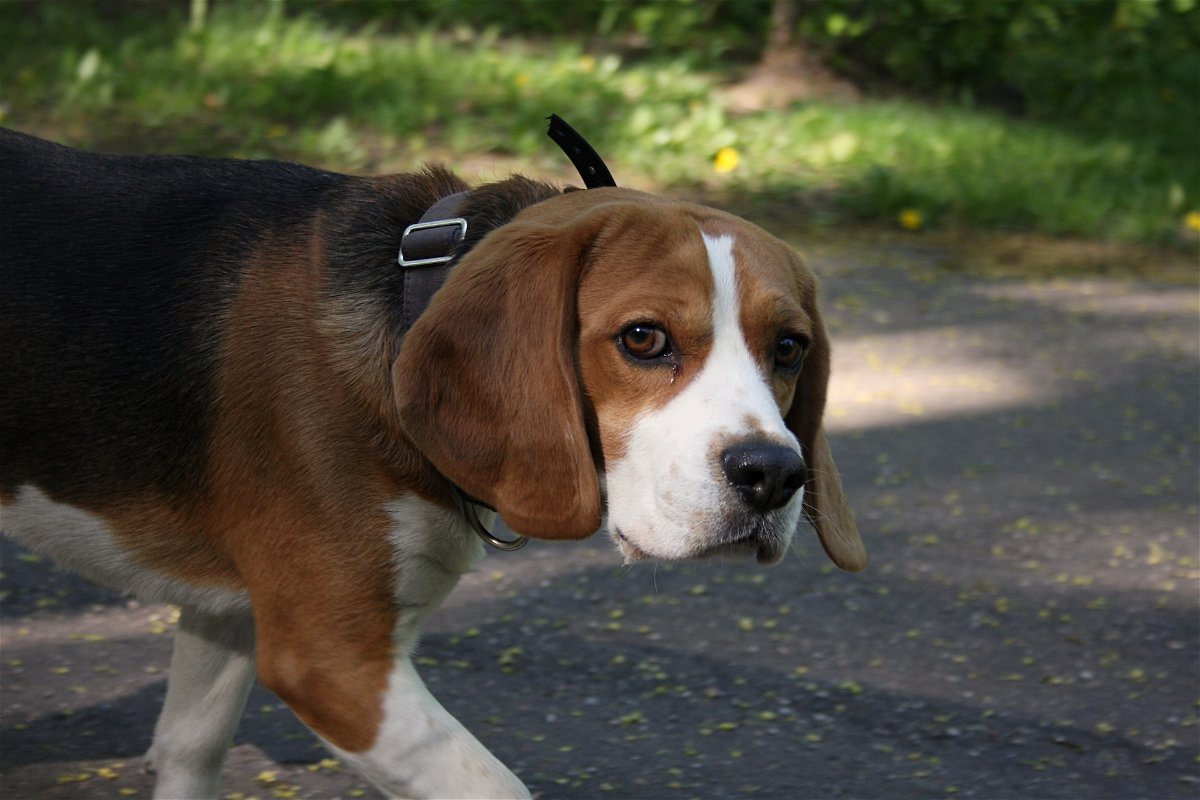
No responses yet